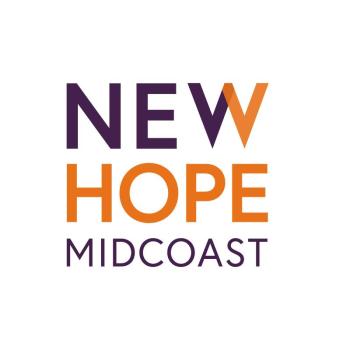Where does safety reside: The intersection of domestic violence and mass shootings
Recent events in Lewiston, coupled with the number of clients served by Maine’s Regional Domestic Violence Resource Centers, highlight the need to take another look at the link between domestic abuse and mass shootings. According to the Institute of Labor Economics, more than 2,300 people in the United States have been victims of mass shootings over the past four decades. These tragic events have significant societal costs; they negatively impact a community’s well-being, emotional health, and economic prosperity. Consequences ripple widely, affecting individuals well beyond those who are immediately exposed. (2,6)
A March 2023 Everytown for Gun Safety Support Fund Analysis reports that the US has over ten times the rate of intimate partner murders than any other advanced nation. Every day in this country, three women are killed by current or former intimate partners. Those in the field know that domestic violence often escalates during the process of separating from an abuser. A victim’s chance of being killed is nine times higher when she threatens to leave and a gun is available to her abuser. Typically, as the perpetrator loses control over the situation, his sense of entitlement rises (i.e., “If I can’t have you, no one can”).
Although most domestic abusers do not become mass shooters, many mass shooters do have a documented history of domestic violence. In her July 17, 2023 article, Mass killers practice: How domestic violence and mass shootings are linked, Kerry Breen states that over half of mass shootings are aimed at family members and intimate partners. They are often the first victims. This is true of the 2016 nightclub shooting in Orlando, the 2021 California rail yard killing, the Sutherland Springs, Texas church tragedy, the killings at both Sandy Hook and Robb Elementary School, and several other incidences.7,8 Moreover, a shooter’s history or intent of domestic violence is correlated with increased fatalities in attacks on the public. As noted in a 2021 edition of Injury Epidemiology, more than 80% of domestic violence-related shootings are fatal. Revenge, jealousy and the need for control are powerful motivators.
In their 2021 review of academic literature, Huff-Corzine and Marvell highlight several characteristics shared by domestic abusers and mass shooters. These include a sense of entitlement and the use of violence as a way to control. In addition, mental health disorders can compound an individual’s inclination to violence (i.e., revenge fantasies, suicidality, social stress, and/or a history of trauma). Suicidal domestic abusers often plan to kill their partner first, sometimes the children as well. Approximately half of mass shooters die by suicide or place themselves in a position to be shot by police; most at least have a plan to kill themselves after their spree. Finally, a form of loss is evident for both domestic abusers and mass shooter; on the one hand, the threat of loss when an abuser’s victim tries to leave, and on the other a general sense of ineffectiveness or “failure to achieve financial success” that permeates white male culture.
Huff-Corzine and Marvell go on to state that criminal and legal authorities are (understandably) interested in whether a history of domestic violence determines the likelihood of committing a mass shooting, as well as whether criminal justice professionals can use records of domestic violence to determine if an individual is at risk for carrying out mass shootings. Regardless, it is crucial for the public to understand and address the root causes of mass shootings, including the need for power and control and access to firearms. Forensic psychologist Reid Meloy has identified eight warning signs of domestic abuse and actions we can all take to help prevent these atrocities. We can vote for community, state, and federal programs that promote gun safety, help prevent domestic violence, and keep guns out of the hands of those with a history of domestic abuse. Employers can create workplace policies that address domestic violence and provide vital support such as paid leave and access to counseling and legal services for victims. Schools can teach healthy relationships grounded in equality and well-developed conflict resolution skills. Most importantly, individuals can educate themselves about warning signs, encourage others to seek help, and report concerning behavior.
Advocates at New Hope Midcoast provide comprehensive services for victim-survivors of domestic abuse and educate local communities about relationships built on mutual respect through trainings for businesses, schools and other organizations. Visit www.newhopemidcoast.org or contact (800) 522-3304 to ask about any of our services and to reach our 24/7 helpline.
New Hope Midcoast is one of Maine’s eight regional Domestic Violence Resource Centers and a member of the Maine Coalition to End Domestic Violence. The nonprofit organization supports people impacted by domestic abuse, dating violence, and stalking through housing and legal advocacy, education and prevention programs, and a 24/7 helpline. New Hope empowers clients by providing options and treating everyone with care and respect. The organization serves Sagadahoc, Lincoln, Knox, and Waldo Counties.
Additional Resources
1 https://everytownresearch.org › mass-shootings-in-america
2 https://www.iza.org/publications/dp/13879/how-do-mass-shootings-affect-community-wellbeing
3 https://www.mcedv.org/learn-about-abuse/statistics/
4 https://www.ojp.gov/pdffiles1/nij/grants/303499.pdf
5 https://www.cbsnews.com/news/mass-shootings-domestic-violence-abuse-connection-research/
6 https://stateline.org/2022/11/14/health-harms-of-mass-shootings-ripple-across-communities/
7 https://www.thetrace.org/2021/06/mass-shooting-domestic-abuse-assault-data-san-jose/
8 https://injepijournal.biomedcentral.com/articles/10.1186/s40621-021-00330-0
9 https://www.thehotline.org/stakeholders/domestic-violence-statistics/…
11 https://www.mainelegislature.org/legis/statutes/26/title26sec850.html
12 https://www.sandyhookpromise.org/blog/teacher-resources/know-the-signs-of-gun-violence/
Notes
The Violence Against Women Act of 2021 did pass a law to keep firearms from dating partners. However, Red Flag Laws are often not enforced, guns may be returned to abusers once an order has expired, and first-time offenders may have gun rights reinstated after five years.
Research has limitations. Mass shootings do not always include information on domestic violence and definitions of both “mass shootings” and “mental health” vary. There is a need for more research regarding Extreme Risk Protection Orders (ERPOs) that result in removing firearms from those most at risk to themselves or others, and many studies do not report the type of abuse to which they refer.

























